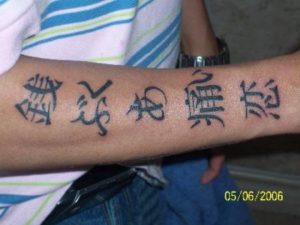 Finally a new “game” has come out for the Nintendo DS that will make me start using it again. Last night I was surfing the Nintendo channel of our Wii while putting off going to bed and came across an advertisement for 美文字トレーニング, a program that helps you improve your handwriting in Japanese. I downloaded the trial version from our Wii to my DS and was instantly hooked.
Finally a new “game” has come out for the Nintendo DS that will make me start using it again. Last night I was surfing the Nintendo channel of our Wii while putting off going to bed and came across an advertisement for 美文字トレーニング, a program that helps you improve your handwriting in Japanese. I downloaded the trial version from our Wii to my DS and was instantly hooked.
Penmanship means a lot to Japanese. From kindergarten through high school, children spend countless hours in class learning and practicing how to write properly, and even as adults people still take courses in penmanship and calligraphy. Although I’m not Japanese and never will be, I still compare myself to those around me, and everyone–including my kids–have better handwriting than I do, and it bugs me. Every time I have to put pen to paper, I’m ashamed of my chicken scratch that looks like that of a four year old stroke victim with cerebral palsy.
Here’s how it works. The program shows you a character on one of the DS’s two screens and prompts you to trace it on the other screen in the correct stroke order. When you’re done it gives you grades for balance, detail and stroke width along with praise or advice on how to improve, just like a calligraphy instructor. It covers 3,119 characters including kanji, hiragana and katakana and up to six people can keep track of their progress on one DS.
For 3,800 yen it seems well worth the price and I’m going to stop off and buy it on the way home tonight.
 Let’s use this one for an example. It’s no better or worse than any of the others, and that’s what’s so horrifying. It’s really, really bad.
Let’s use this one for an example. It’s no better or worse than any of the others, and that’s what’s so horrifying. It’s really, really bad.